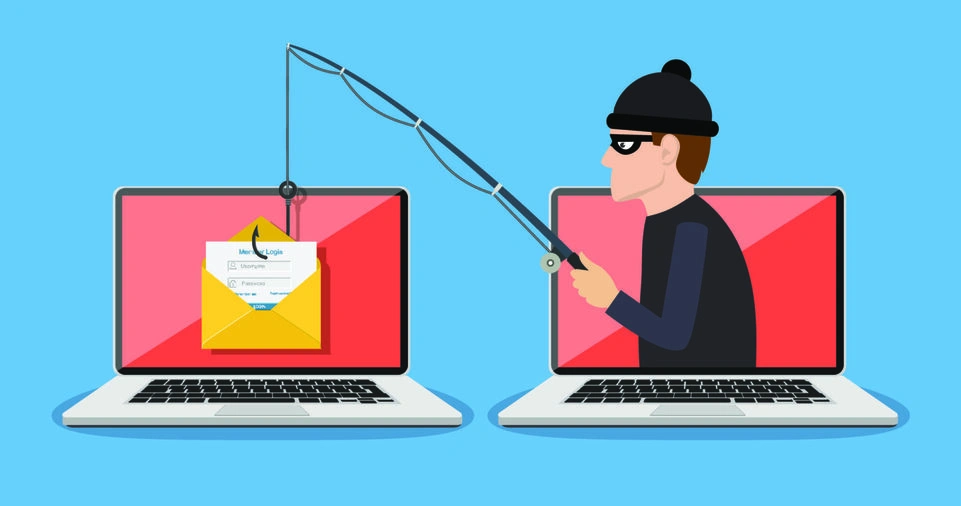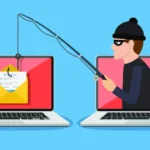In today’s highly connected digital world, the convenience of online communication also brings increased risks. One of the most prevalent and dangerous forms of cyber threats is phishing.
Phishing attacks are deceptive attempts by cybercriminals to trick individuals into divulging confidential or personal information such as passwords, credit card details, or social security numbers.
These attacks often appear as trustworthy communications, impersonating well-known institutions or individuals to deceive the victim.
With the ever-increasing sophistication of phishing techniques, from simple email scams to complex spear-phishing campaigns and SMS phishing (smishing), it is critical for individuals and organizations to remain vigilant.
The consequences of falling for a phishing scam can be severe, including financial loss, identity theft, and reputational damage. Therefore, understanding how to identify these attacks and knowing how to respond effectively is essential.
This guide provides a comprehensive overview of phishing attacks, including the various types, red flags to watch for, and practical steps to take if you suspect or fall victim to one.
Whether you’re a casual internet user or an IT professional, these insights can help fortify your defense against one of the most common cyber threats today.
What is a Phishing Attack?
Phishing is a cybercrime wherein attackers disguise themselves as trustworthy entities to steal sensitive information.
The term “phishing” is derived from the word “fishing,” as it involves luring unsuspecting victims using bait.
Typically, the bait is presented in the form of fraudulent emails, text messages, social media communications, or even phone calls.
These messages often appear to come from legitimate sources such as banks, government agencies, online retailers, or email providers.
The main objective of phishing is to prompt the recipient into clicking a malicious link, downloading an infected attachment, or entering personal information into a fake website.
There are several variations of phishing attacks. Spear phishing, for example, targets specific individuals or organizations with personalized messages.
Whaling is a form of spear phishing aimed at high-profile targets like executives or public figures. Smishing uses SMS messages, while vishing involves voice calls.
Despite their different methods, all phishing attacks share the common goal of deception and exploitation.
Cybercriminals use stolen data for unauthorized access to systems, identity theft, financial fraud, and even selling personal data on the dark web.
The low cost and high reward of phishing make it a favored tactic among cybercriminals, emphasizing the importance of awareness and preventative measures.
Common Signs of Phishing Emails and Messages
Recognizing the signs of a phishing attempt is the first line of defense against such attacks.
One of the most common indicators is the presence of a suspicious email address or domain.
While the sender may appear legitimate at first glance, closer inspection often reveals subtle misspellings or altered domains (e.g., support@paypa1.com instead of support@paypal.com). Another red flag is the use of urgent or threatening language.
Phishing messages frequently claim that your account is compromised or will be deactivated unless immediate action is taken. This sense of urgency is designed to bypass your logical reasoning and provoke a hasty response.
In addition, phishing messages often contain offers that are too good to be true.
These could include fake promotions, lottery wins, or exaggerated discounts that require clicking a link or sharing information.
Poor grammar and spelling mistakes are also common in phishing communications, which are often hastily put together or generated using translation tools.
Be wary of unsolicited attachments or unusual file formats like .exe, .scr, or .zip, especially if they come from unknown sources. Legitimate organizations rarely ask for personal or financial information through email or text.
If a message seems unusual or requests sensitive information, it’s best to verify its authenticity through official channels.
Types of Phishing Attacks You Should Know
Understanding the different types of phishing attacks can help you better recognize and avoid them.
The most common type is email phishing, where attackers send mass emails impersonating reputable organizations to lure victims into clicking malicious links or downloading harmful attachments.
Spear phishing takes this a step further by targeting specific individuals or organizations.
These messages are often customized using personal information gathered from social media or public records, making them more convincing and harder to detect.
Whaling is a specialized form of spear phishing that targets high-level executives or individuals with access to sensitive company data.
The attacker may pose as a CEO or other executive to trick employees into transferring funds or revealing confidential information. Smishing involves phishing attempts sent via SMS.
These messages often contain links to malicious websites or request personal information under the guise of a legitimate service.
Vishing, or voice phishing, is conducted over the phone. Scammers may impersonate bank officials, tech support, or government representatives to manipulate the victim into divulging private data.
Another growing threat is pharming, where cybercriminals redirect users from legitimate websites to fraudulent ones without their knowledge. This is often achieved by exploiting vulnerabilities in DNS servers.
Being aware of these different methods is crucial in staying one step ahead of cybercriminals. Regular training and awareness campaigns can help individuals and organizations recognize the various forms of phishing and implement appropriate defensive measures.
ALSO READ: How to Use Data Backup Solutions to Prevent Business Downtime
How to Verify Suspicious Emails or Messages

When in doubt, verifying the authenticity of a suspicious email or message is crucial. The first step is to examine the sender’s email address or phone number carefully.
Even if the display name looks familiar, the actual address might reveal inconsistencies or unauthorized domains.
Hover your mouse over any hyperlinks to see the real URL, which may point to a completely different or malicious website. If the link appears suspicious, do not click it.
Check for spelling and grammatical errors, as well as generic greetings like “Dear Customer” instead of using your actual name.
Legitimate organizations typically personalize their communications. If the message asks for urgent action or contains a threat, it’s a strong indication of phishing.
Instead of replying to the suspicious message, contact the organization directly using verified contact information from their official website.
You can also utilize online tools and browser extensions that check the safety of URLs and websites.
Services like Google Safe Browsing, VirusTotal, or McAfee SiteAdvisor can help you determine if a site is known for phishing. Email providers and workplace systems often have built-in phishing filters and warning mechanisms.
If your platform flags a message as suspicious, it’s best to heed the warning. Ultimately, taking a few minutes to verify a message can save you from potential data breaches or financial losses.
Steps to Take if You Fall for a Phishing Scam
If you suspect that you have fallen victim to a phishing attack, it is essential to act quickly. The first step is to disconnect your device from the internet to prevent further data transmission.
Run a full system scan using reputable antivirus or anti-malware software to detect and remove any malicious programs.
If you entered your login credentials on a phishing site, immediately change your passwords for that account and any other accounts that use the same or similar credentials.
Enable two-factor authentication (2FA) on all your accounts to add an extra layer of security.
Notify your bank or credit card company if you shared any financial information, and consider placing a fraud alert on your credit report.
Report the phishing attempt to your email provider and relevant authorities, such as the Anti-Phishing Working Group (APWG) at reportphishing@apwg.org or your country’s cybersecurity agency. Document all interactions and communications related to the incident for future reference.
It is also a good idea to inform your employer or IT department if the phishing attempt occurred through your work email.
This can help prevent the spread of the attack within your organization. Taking these steps promptly can significantly reduce the potential damage and help you recover more effectively.
Best Practices to Prevent Phishing Attacks
Preventing phishing attacks involves a combination of technology, awareness, and best practices. Begin by keeping your software, operating system, and antivirus programs up to date.
These updates often include security patches that protect against known vulnerabilities. Use strong, unique passwords for each account and consider using a password manager to store them securely.
Enable multi-factor authentication (MFA) wherever possible.
This adds an extra layer of protection by requiring additional verification, such as a code sent to your phone, even if your password is compromised.
Be cautious when clicking on links or downloading attachments, especially if the message is unexpected or from an unknown source.
Regularly educate yourself and others about the latest phishing techniques.
Employers should provide ongoing cybersecurity training to staff, including how to recognize and report phishing attempts.
Consider deploying email security solutions that filter out suspicious messages before they reach your inbox.
Phishing simulations can also be a valuable tool in testing and reinforcing employee readiness.
By adopting these best practices, you can greatly reduce your vulnerability to phishing attacks and help create a safer online environment for yourself and your organization.
ALSO READ: Why SEO is Essential for Your Franchise Business in 2025
Conclusion
Phishing attacks are a persistent and evolving threat in the digital age. While attackers continue to refine their tactics, individuals and organizations can stay ahead by being informed, cautious, and proactive.
Recognizing the signs of phishing, understanding the different types, and knowing how to respond are critical components of cybersecurity hygiene.
The steps and best practices outlined in this guide provide a comprehensive approach to minimizing the risks associated with phishing.
From verifying suspicious communications to implementing advanced security measures, every action counts in defending against these deceptive schemes.
In a world where digital interactions are the norm, awareness and preparedness are your best defenses.
Stay alert, stay informed, and never let your guard down when it comes to protecting your personal and professional information from phishing attacks.







